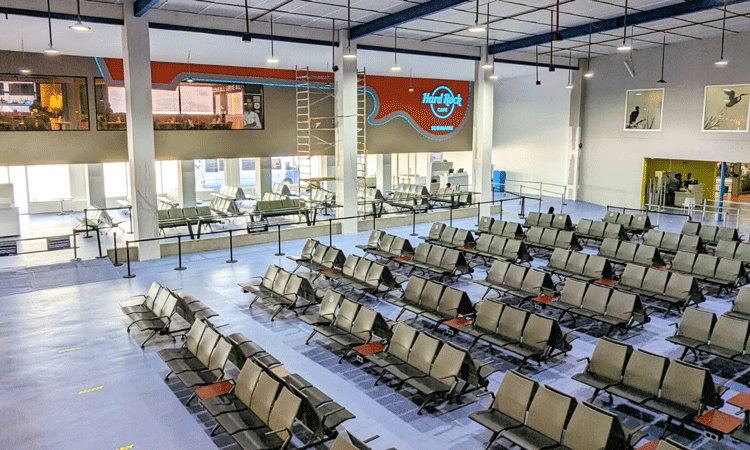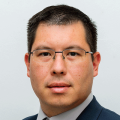International Airport Review had the opportunity to speak with Andrew Müller, Corporate Planner – Business Development for JA Pengel International Airport. In this Q&A, Andrew tells us how the airport is attracting new airlines and passenger traffic by marketing Suriname to energy companies, new markets and tourism organizations.


c: PBM Airport
How have your passenger operations evolved in 2023? Where are you now in terms of passenger traffic and operations?
JA Pengel Airport is located in Suriname, which is also known as Dutch Guiana. When you hear Guyana, you think of oil and gas right now. So this is already a bit of a trendsetter for exponential growth. We don’t see it yet, but we have seen this coming to the market.
So I’m trying to find new routes and figure out how we can make this journey possible for everyone who comes to Suriname and how we can, of course, make the airport boom. That’s what we’re aiming for.
Can you tell me about the company’s terminal improvement project for JA Pengel International Airport and its objectives?
Our principle was to improve the customer experience and ensure the smooth flow of the journey from point A to point B. The project basically started before COVID-19, and of course during the pandemic we had to slow down quite a bit, while other airports actually used this time well to improve their facilities. However, we needed the funding urgently. When traffic recovered, we started to push the project forward.
Improvements have started from the third quarter of 2023. When you are there, you will immediately see that there is a more modern facility in the departure area where passengers go now (not yet on the arrival side). And we have more in store. Unlike the traditional, purely manual situation that we are trying to change, technology comes into play. Overall, it will change our facilities for the better.
How will these improvements improve the passenger experience and increase capacity?
At our airport, arrivals and departures are completely separated. On some days, when we talk about a busy day, we have three flights and then everything is crowded. There was a requirement to drastically increase the seating capacity.
Since Suriname is a former colony of the Netherlands, there is quite a lot of traffic to Amsterdam. And when two wide-body aircraft are travelling at the same time, the facilities are overcrowded and the passengers’ journey becomes a nightmare. The plan was to increase the seating capacity by more than 100%.
We have also added some new restaurant facilities to create additional seating and we will be finished on the departure side by the end of the year.
Unfortunately, you lost the airline American Airlines in 2023. Can you tell us about the situation and how the loss of the oil and gas companies has affected the airport financially?
We lost American Airlines in 2023, and that was largely because traffic slowed down and the market became a little bit of a loss leader – despite the fact that oil and gas companies were actively chasing the jackpot. So they said, “Andrew, we’re going to take a break, let the market recover and then see how it goes.”
That’s why I’m here at Routes to talk to them and inform them about the potential of what’s happening now in Suriname compared to last year. We’re discussing the different movements we’ve seen over the course of a year and post COVID-19. Fortunately, the numbers are increasing, so that’s a good start. This will hopefully allow American Airlines to return to JA Pengel International Airport at some point in the future.
Are you optimistic about getting her back? What is your overall plan?
Yes, we are optimistic. And that’s not just American Airlines; many other airlines are looking at the market. The airlines are looking at our neighboring country Guyana and what’s happening there, because we have a delay of three to five years.
We will perhaps see what happens in the next three to five years, so it is a bit of a copy-paste situation. I wouldn’t say Guyana is the guinea pig, but we will take our cues from that. We expect many more airlines to come to Suriname in the near future.
What impact does this have on the general problems facing smaller airports across the South American region?
Overall, it’s still a challenge. Suriname is strategically located. But that’s not necessarily the case for some of the routes and airlines that want to operate there, because they’re faced with the operating times, the flight times required, the rest times for the crew, etc. That becomes quite a challenge, especially because we’re small and we need more connectivity. But so far, we can’t offer that to the fullest.
How do you work with government and tourism agencies to facilitate more traffic?
Our relationship with the government is quite good. However, we lack the experience to grow this market – this is especially true for our tourism industry.
It requires a lot of education and also a change of mindset. But we have the help of the government when it comes to signing bilateral agreements with different countries. We are looking for general liberalization and we want everyone to come and go. But we have to do it together. This is not a one-man show. We are part of the government but it needs a helping hand, just like we do.
To put it locally: What challenges have you encountered in trying to bring tourism and transport to the region, in terms of tourism and your collaboration with hotels?
In terms of traffic generation, we are banking on the development of oil and gas. But if oil and gas production stops, all the traffic will be lost. We need to make our tourism market more sustainable, this will be here for many, many years. We are a relatively unknown country, so this sets us back a little. But that’s why we are at Routes, to promote Suriname and show the opportunities that exist there. Once we have that traffic, people will talk about it. They are already saying the region could become the next Dubai, and we have already seen what that has brought them in reality. We could be a fraction of that.
What opportunities do you see in 2024?
Well, for 2024, one of the goals is to bring our overall facilities up to the required level and meet international standards. I will continue to work to support route development so that everyone will eventually find a connection point to easily get to Suriname.
Unfortunately, at the moment we have to make too many stops to get to Suriname, so it’s quite difficult. But I’m focused on starting in 2024 to prepare them for the years to come. But the work has to start now.
What is the most distinctive feature of your airport that gives passengers a sense of locality?
Suriname is quite unique. We are always seen as the opposite of everything. We are different, yes. But something that attracts is something that I have personally experienced: when the tourists or even everyone we work with comes from abroad, they say Suriname is special. It is different. That makes us stand out, we are quite unique. We don’t have mass tourism. We don’t have all these big, extravagant things. We are still a bit old-fashioned, but I think that makes us stand out in a very different way.
Those who come along eventually will see how surprising this will be. I look forward to this turning into something more mundane and random, apart from being different.


c: PBM Airport
With over 15 years of dedicated service to Airport Management Ltd (AML) – the operator of the Johan Adolf Pengel International Airport (PBM) in Suriname, Andrew MullerA native of Surinamese, he stands out as an experienced professional who supports AML’s management team and leads the organization’s business development. His career is characterized by a mix of operational expertise, strategic vision and a personal touch that greatly enriches his professional career through his contribution to the aviation industry in Suriname.
Andrew began his career with Airport Management Ltd. in 2009 as a Senior Project Officer. In this role, he oversaw critical projects and initiatives, laying the foundation for his future contributions. After two years, he moved to Head of Airport Operations, where he led the operations department for over six years, ensuring smooth and efficient airport operations.
In 2016, Andrew assumed the role of Corporate Planner Business Development and has served in that role for over seven years to date. His involvement in route development has been particularly impactful, including his success in securing new flight connections for PBM. In particular, his efforts led to the launch of a new airline and route by Copa Airlines, as well as the launch of American Airlines to Suriname, improving regional connectivity and driving growth in air travel.
Andrew’s professional success is based on a solid education. He earned a Bachelor of Science in Aviation Business Administration from Embry-Riddle Aeronautical University in Daytona Beach, FL, USA in 2004, which contributed significantly to his career.
In his personal life, Andrew has been married to his wife Sofia, a native of Colombia, for over 13 years and together they have two sons. This Latin American influence in his life has been a source of inspiration and has contributed significantly to his success in promoting Latin American influences in route development. Andrew’s multicultural perspective has enriched his approach to business development for AML and has added a valuable global dimension to his work.
In addition to his professional and personal commitments, Andrew has been a hobbyist in aviation photography for over 25 years. This passion allows him to combine his love of aviation with his career, capturing the dynamic world of airports and adding a personal touch to his professional life.
Andrew Müller’s career is a testament to his commitment, his expertise and the harmonious combination of his professional successes and his personal passions.
